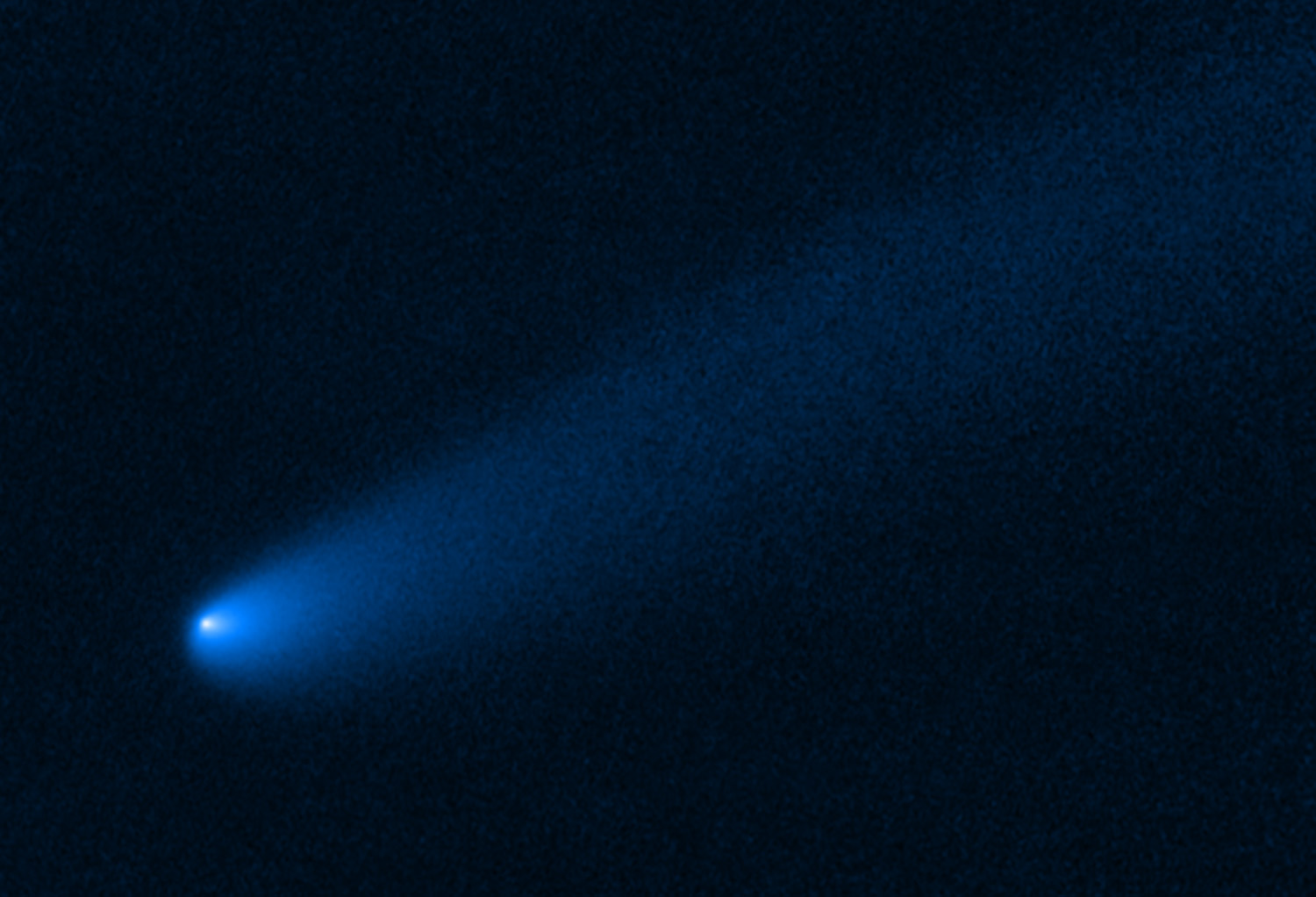STScI: Comet Makes a Pit Stop Near Jupiter’s Asteroids

NASA’s Hubble Space Telescope snapped this image of comet P/2019 LD2, which now resides near Jupiter’s captured ancient asteroids, called Trojans. This is the first time a comet has been spotted near the Trojan population. CREDITS: NASA, ESA, STScI, B. Bolin (IPAC/Caltech)
After traveling several billion miles toward the Sun, a wayward young comet-like object orbiting among the giant planets has found a temporary parking place along the way. The object has settled near a family of captured ancient asteroids, called Trojans, that are orbiting the Sun alongside Jupiter. This is the first time a comet-like object has been spotted near the Trojan population.
The unexpected visitor belongs to a class of icy bodies found in space between Jupiter and Neptune. Called “Centaurs,” they become active for the first time when heated as they approach the Sun, and dynamically transition into becoming more comet-like.
Visible-light snapshots by NASA’s Hubble Space Telescope reveal that the vagabond object shows signs of comet activity, such as a tail, outgassing in the form of jets, and an enshrouding coma of dust and gas. Earlier observations by NASA’s Spitzer Space Telescope gave clues to the composition of the comet-like object and the gasses driving its activity.
“Only Hubble could detect active comet-like features this far away at such high detail, and the images clearly show these features, such as a roughly 400,000-mile-long broad tail and high-resolution features near the nucleus due to a coma and jets,” said lead Hubble researcher Bryce Bolin of Caltech in Pasadena, California.
Describing the Centaur’s capture as a rare event, Bolin added, “The visitor had to have come into the orbit of Jupiter at just the right trajectory to have this kind of configuration that gives it the appearance of sharing its orbit with the planet. We’re investigating how it was captured by Jupiter and landed among the Trojans. But we think it could be related to the fact that it had a somewhat close encounter with Jupiter.”
The team’s paper appears in February 11, 2021 issue of The Astronomical Journal.
The research team’s computer simulations show that the icy object, called P/2019 LD2 (LD2), probably swung close to Jupiter about two years ago. The planet then gravitationally punted the wayward visitor to the Trojan asteroid group’s co-orbital location, leading Jupiter by about 437 million miles.
